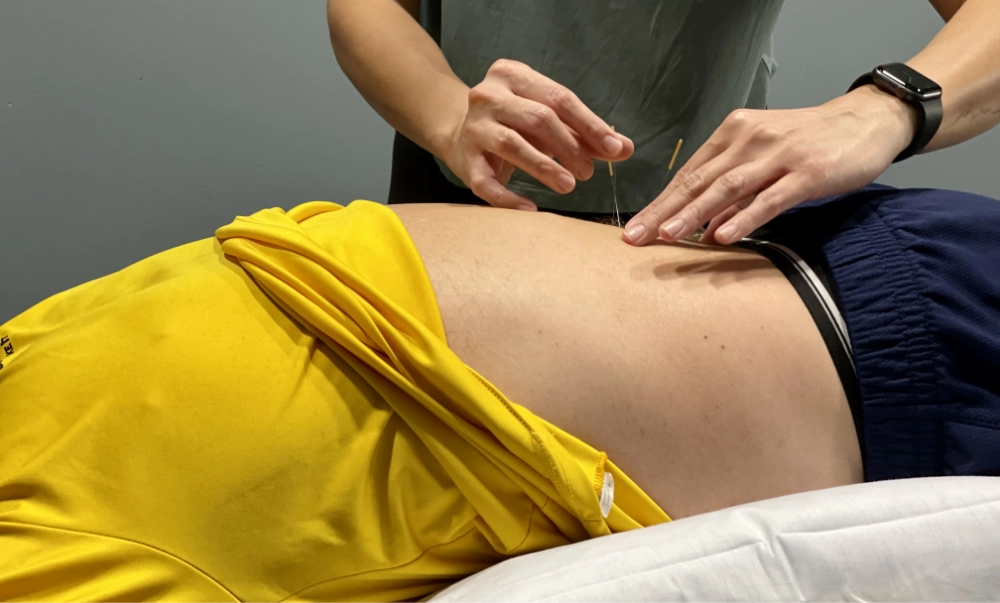
Do you have a friend who told you that they got dry needled during physical therapy, and their plantar fasciitis finally went away? Or maybe you’ve heard that dry needling can help get rid of that pesky tennis elbow pain so you can get back in the game.
You’re probably wondering what dry needling is and if it could help you with your pain. Let’s dive in to learn the answer to that question and see if dry needling could be a good fit for you.
Before we understand what dry needling is, we first need to understand what it is not. Dry needling is not acupuncture. While dry needling does use the same type of thin needle as acupuncture, the application technique is very different.
In acupuncture, an acupuncturist uses their knowledge of specific points that have been mapped out in the body called meridians and applies the needle in these points. Dry needling, on the other hand, relies on palpation and the clinical skillset of your physical therapist to determine where to apply the needle and for how long to achieve a particular tissue response.
Your physical therapist often will use a technique where they find a painful trigger point then apply the needle to it to allow the tissue to relax. Depending on your individual symptoms and movement deficits, your physical therapist may also needle points located along the same movement or myofascial chain.
Dry needling causes several responses within your body that help to ease the pain. It has been shown to create a local inflammatory response that stimulates enhanced tissue healing. It also assists in releasing your body’s natural opioids for a short period of time which can ease your pain. And often, individuals will experience improved mobility in the painful area and be able to actively contract the tissue with less pain after they have been dry needled.
You might be thinking to yourself, this sounds too good to be true! It’s only natural when you learn of a treatment technique to want to know if it works. So let’s examine a study that sought to answer just that question.
In 2014, researchers reviewed the literature on dry needling. From their review of the quality research available, the findings revealed that dry needling has consistently been able to reduce pain and disability in the short term.
It’s important to note that to achieve long term pain relief and restore functional use of a painful body region, dry needling is intended to be used in combination with therapeutic exercise. This is where your physical therapist will come in and design individualized exercises for your issue to reinforce the benefits you received from the dry needling treatment and prevent your issue from coming in the future.
Dry needling can be performed in many areas of the body. Everything from low back pain to TMJ syndrome responds well to dry needling. It can also help treat headaches or help alleviate widespread pain in the case of individuals who have fibromyalgia.
Your physical therapist can answer your specific questions about dry needling and help you determine if you are a good candidate for dry needling. Schedule an appointment today to get your individual evaluation and find some much-needed pain relief with dry needling!
Dunning J, Butts R, Mourad F, Young I, Flannagan S, Perreault T. Dry needling: a literature review with implications for clinical practice guidelines. Phys Ther Rev. 2014 Aug;19(4):252-265. doi: 10.1179/108331913X13844245102034. PMID: 25143704; PMCID: PMC4117383.
Subscribe to Receive More Info on How to Stay Healthy!
All information on this website is intended for instruction and informational purposes only. The authors are not responsible for any harm or injury that may result. Significant injury risk is possible if you do not follow due diligence and seek suitable professional advice about your injury. No guarantees of specific results are expressly made or implied on this website.
© unifypt.com | All rights reserved